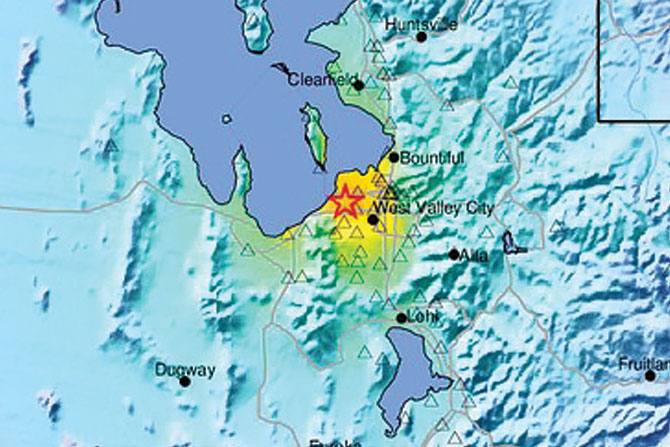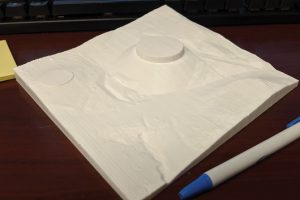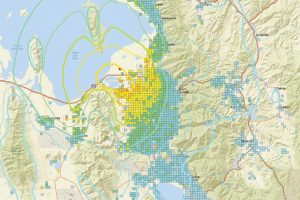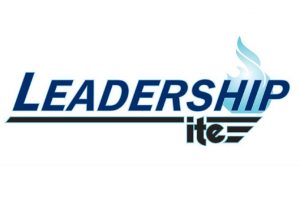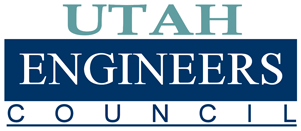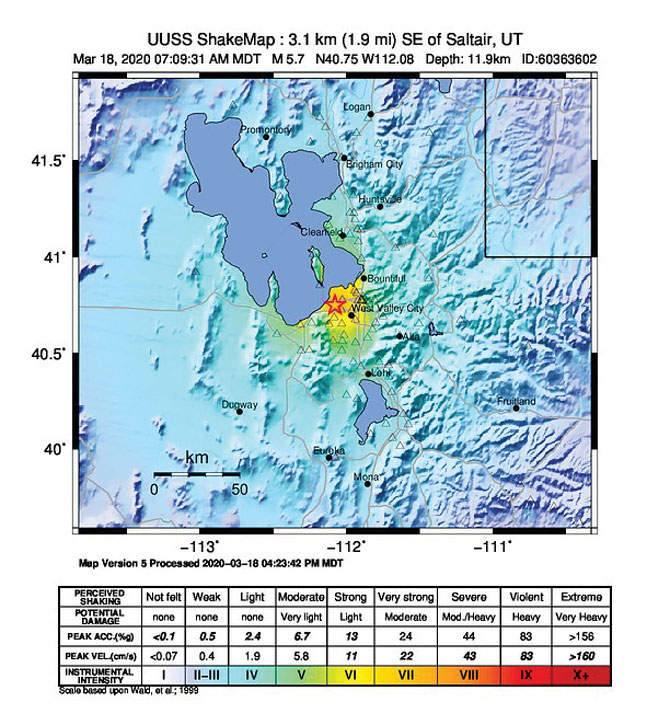
On the morning of March 18, 2020, life was already a bit surreal. Due to the rapidly developing COVID-19 pandemic, local schools had abruptly closed to in-person learning, keeping our two elementary school-aged children home. We voluntarily sat out day care for our youngest child, and my husband’s office closed completely the day after the infamous Rudy Gobert incident that triggered the shutdown of the NBA. At Reaveley Engineers, we had a partial exodus of staff under a voluntary policy. I opted for a hybrid. With deadlines on a large hospital project looming, I intended to split my time between the office and my dining room table — not wanting to put the entire burden of taking care of three children on my spouse.
I stood in the kitchen, waiting for my coffee to brew, when the earth moved at 7:09 a.m. The shaking at my home in Cottonwood Heights was significant enough to cause me to brace myself with the counter. I looked out the window toward Holladay and Salt Lake City, where the sparking transformers looked like flashes of lightning. This earthquake was only the third one I had felt in Utah since moving home after college. The first was a foreshock in Bluffdale, Utah, in 2019 that awakened me enough to have my mobile in hand looking for U. S. Geological Survey (USGS) updates when the magnitude MW 3.7 mainshock hit. This time, as in 2019, I went first to the USGS website to submit my citizen science report of what I felt.
In the next few minutes, I was surprised to learn that the magnitude MW 5.7 event occurred in Magna. I made sure my family was settled after the excitement, reached out and responded through text messages with family and friends, and headed to the office to face what was inevitably going to be an interesting day.
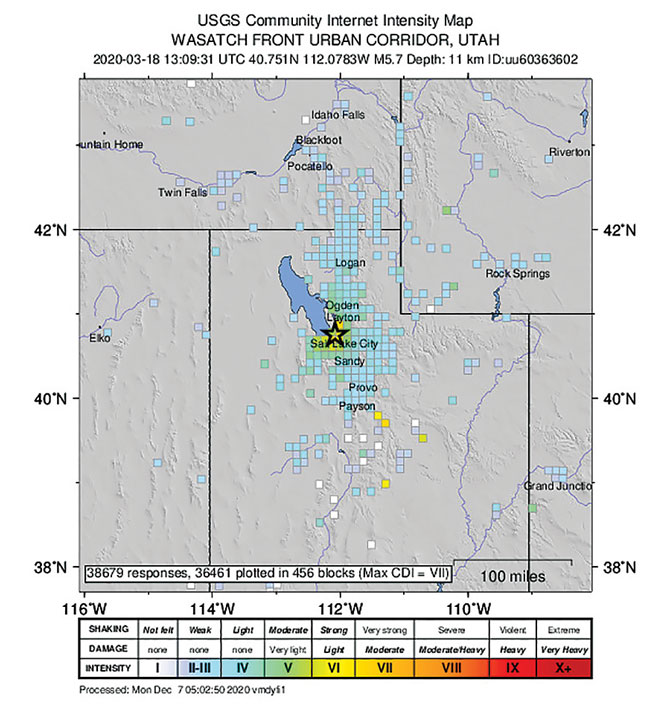
The Wasatch Front has long been known as earthquake country to scientists and engineers. The grand mountain ranges frame our cities and towns and create the vibrant outdoor recreation that often draws people to our state. They also stand as evidence of the thousands-to-millions of years of uplifting geologic activity that created them. As a community, however, we all seem to be lulled into complacency by the very fact that we have never had catastrophic earthquake damage here. There has never been a building collapse resulting in extreme casualties or a clear “near miss” similar to the 1933 Long Beach, California earthquake.
Looking back on the Long Beach event, it is easy to see why it was such a catalyst for changes to building standards in California. More than 230 unreinforced masonry (URM) school buildings were destroyed, suffered major damage, or were judged unsafe to occupy following the earthquake.1 The magnitude MW 6.3 event shook the ground with a maximum Modified Mercalli Intensity (MMI) of VIII (severe) at 5:54 p.m. If the event had occurred mere hours before, while school was in session, Long Beach would have experienced a devastating loss of school-age children. California prohibited the construction of URM schools the following month, and the Riley and Field Acts followed within the year.
The Riley Act required all California local governments to have a building department and inspect new construction, mandating that all state structures be designed to withstand a horizontal acceleration of 0.02 times the building mass. The Field Act mandated that schools be designed to 0.03 times the building mass by registered architects and engineers. URM building failures were among the leading causes of casualties in many California seismic events. The failures led to widespread retrofitting ordinances.2
Casualties and economic losses in California’s significant earthquakes (MW 5.3 to MW 7.8) have formed the foundation of modern seismic provisions in building codes in the United States. By contrast, Utah’s largest modern earthquakes occurred in rural parts of the state. Both Hansel Valley (1909) and Elsinore (1921) experienced events estimated at magnitude 6+ with no casualties.3 Given the relatively modest community impacts of these events, it becomes more understandable that unreinforced masonry buildings were constructed in Utah through the 1970s. It is common to estimate that prohibition of this construction type was enforced by 1975 with statewide adoption of the Uniform Building Code (UBC). However, some URM construction may have continued for a few years where permitting may have already occurred.
Utah would go over 20 more years before building codes would fully recognize the significant earthquake risk and raise the seismic demand for which buildings would be designed by adopting the 2000 International Building Code. The previous seismic provisions of the 1997 UBC categorized the Wasatch Front and surrounding areas as Zone 3. In contrast, the updated provisions would be approximately equivalent to UBC Zone 4, roughly a 1/3 increase for parts of the Wasatch Front. It bears restating that buildings constructed under the old provisions (anything permitted before 2001) were likely designed at roughly 75% of the seismic design forces in place now. A map of the 2018 national seismic hazard in Figure 3 shows the highest seismic hazards along the urban Wasatch Corridor.
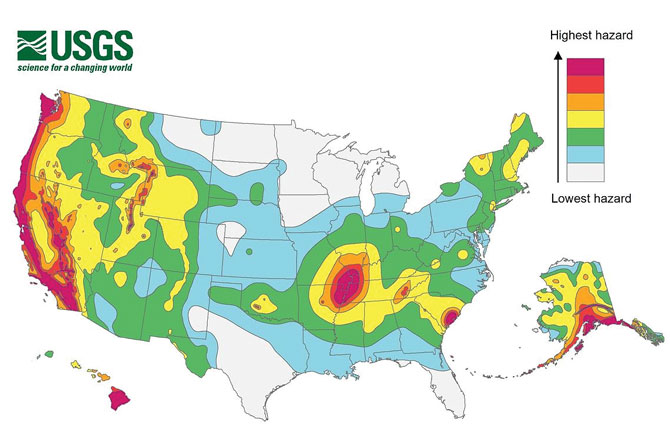
With knowledge of Utah’s seismic risk, various communities and organizations have been retrofitting critical structures.4 In 1987, the Salt Lake City and County Building was one of the world’s first buildings to be retrofitted with base isolation.5 FEMA programs and grants such as the 1997 Project Impact initiative have been critical to addressing URM parapets and retrofitting schools in Utah.6 Other notable seismic retrofits in the state include the Utah State Capitol, the Wallace F. Bennett Federal Building, the Salt Lake Tabernacle, the Marriott Library and, currently underway, the Salt Lake Temple.
While the voluntary retrofitting projects are significant, especially by health care organizations, they do not come close to eliminating the risk to all Utahns. In 2008, at the Utah legislature’s urging, the Utah Seismic Safety Commission (USSC) compiled an inventory of unreinforced masonry buildings. The commission found that in the Salt Lake Valley alone, there are over 185,000 such structures.7 Most URMs are single-family residences ranging from historic bungalows to midcentury multilevel tract homes. Other common URM building types include apartment buildings up to three stories above grade and commercial buildings up to five or six stories tall. Additionally, many historic midrise steel structures have unreinforced masonry infill that may fail in a moderate-to-large magnitude earthquake.
Notably, in 2011, the USSC and Structural Engineers Association of Utah (SEAU) published a preliminary survey of K-12 schools.8 This report highlighted the risk to students’ safety in school buildings and requested funding for additional study from the Utah Legislature. This call for funding went unanswered by the legislature, but the governor’s office offered partial funding in 2015. The effort to find funding to complete the school building survey is ongoing now, 10 years after the report.
Leading up to the 2020 Magna earthquake, the largest recorded by modern technology on the Wasatch Fault, the seismic risk to our community is characterized by a few things unique to the Wasatch Front Region:
- Unretrofitted unreinforced masonry buildings are common.
- National building codes were not enforced reliably across the state until 1980.
- The UBC underestimated design forces for the Wasatch Front compared to other high seismic regions such as California (in place until 2001).
- Utah is politically averse to regulation; even the state’s parapet bracing ordinance has been subject to attack (Utah Code Section 15A-3-801).
- The state does not have any statewide geologic-hazard ordinances related to earthquakes and secondary effects (e.g., surface fault rupture, earthquake-induced landslides, and liquefaction).
Misperceptions surround what our building code life-safety standards really deliver to our communities regarding seismic design.
Life safety standards aim to provide the likelihood that occupants will be able to escape a building unharmed during an earthquake but do not aim to eliminate damage to the building itself. Any reduction in damage beyond preventing building collapse to the building is a byproduct. In other words, a life safety standard saves lives during an earthquake but does not save the building, nor the meaningful life and the livelihoods we build within those buildings.
Our building codes and seismic design are also predicated on the idea that a building’s useful life is 50 years — factoring in the probability the “big” earthquake will happen at a certain location in the next 50 years. Interestingly, though, I have not yet seen a bulldozer show up on-site when a building reaches that age. We should remember what Dr. Lucy Jones, a seismologist and science communication expert, frequently says: it is not a question of if the Big One will occur, but when. Give a building enough time, and an earthquake will affect it. The real question becomes whether we should be building a community that will recover adequately from a potential strong (MW6.0-MW6.9) or great (over MW7.0) earthquake,9 if not just for our sakes, but also for our children and grandchildren.
Upon arriving at my office in Salt Lake on March 18, I felt the parking deck roll underneath me as an MW 4.4 aftershock hit. It was the first of three significant aftershocks I would feel throughout my workday. The office was buzzing with activity — even with less than half of the staff in the office. We received phone call requests for building inspections, and a coordinated effort was established to dispatch our engineers quickly to meet the most pressing needs. Structural engineers all over the county were busily visiting buildings and, in most cases, explaining the extensive damage was largely limited to nonstructural elements.
The mainshock, as mentioned earlier, was the largest recorded by modern instruments on the Wasatch Fault. Even though seismologists classify anything from MW5.0-5.9 as a moderate earthquake, shaking intensity registered VII (very strong) on the Modified Mercalli Intensity (MMI) scale. USGS estimates it was experienced by 139,000 people (see Figures 3 and 4). This shaking intensity is a higher one than anticipated for this size event. Seismologists met the first week of February for the 2021 Virtual Utah Quaternary Fault Parameters Working Group Meeting.10 Participants discussed the causes of the higher shaking intensity, along with the data and research that were generated by the community in the wake of the Magna sequence. According to one seismologist, Ivan Wong, P.G., the event was the best one ever recorded in the Basin and Range Province in terms of the strong motion. Due to extensive instrumentation and data collection, areas of greatest damage can be correlated with the strongest ground shaking. 11
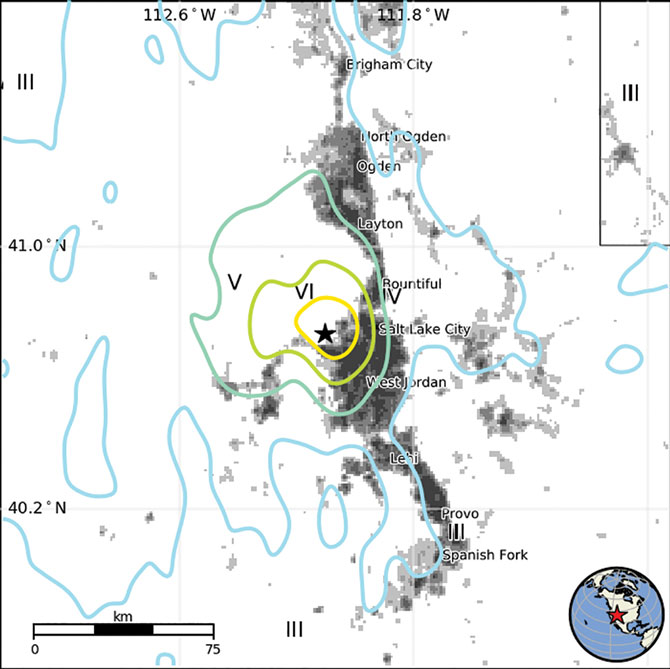
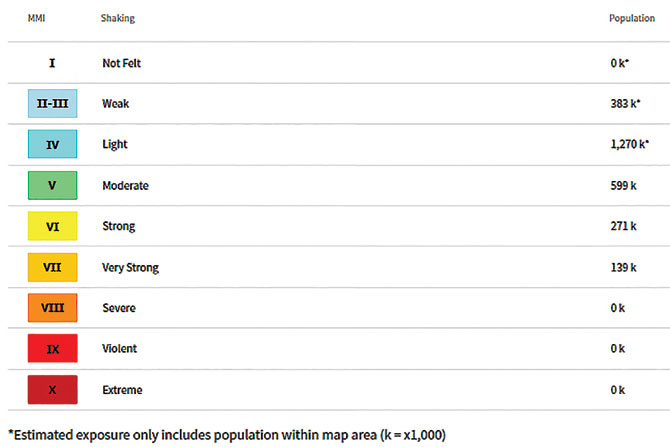
Damage from the Magna earthquake was widespread in Salt Lake County. While the total economic losses are distorted due to ongoing business disruption from the COVID-19 pandemic, property damage and loss totals will likely be generated based upon insurance claims and FEMA assistance programs in the future.
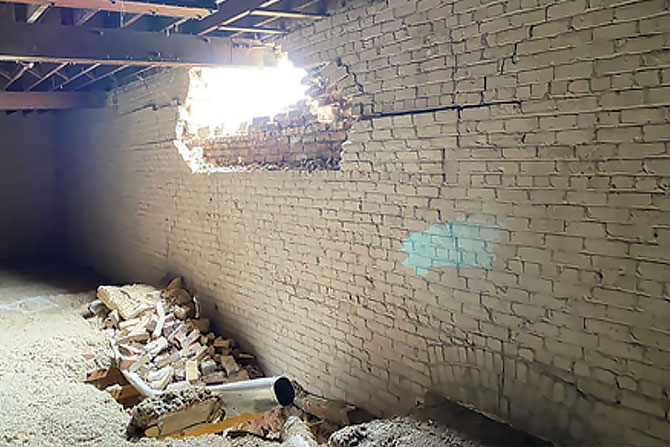
Structural damage included connection failures at masonry and concrete walls to floor and roof decks — some with a partial collapse at decks, and a partial collapse at a URM bearing wall (Photograph 1), and URM in-plane shear cracking with telltale x-patterns and twisting at corners. At least one instance of a prefabricated metal building connection failure was documented in the EERI Virtual Earthquake Reconnaissance Team report.12 Many unreinforced masonry chimneys and parapets fell onto the sidewalks and lawns below them from commercial and residential buildings.
In the early stages after the earthquake, the Red Cross opened evacuation centers at nearby schools that were ultimately unneeded. Forty-nine homes in the community at the Western Estates mobile home park were placarded as unsafe (red-tagged per ATC-20 evaluation criteria) due to failure of the unit supports (see Photograph 5). Bruce Maison reports that this is notable because each had been anchored, but the anchorage failed during the earthquake.13 While the collapsed foundations did not result in gas leaks or fire, the overall damage to this community raises an important point of concern for local disaster mitigation efforts. Manufactured housing, which includes mobile homes, is the single largest unsubsidized, affordable housing source in the U.S. It represents over 6% of the country’s housing stock. Protecting these communities from disaster impact is critical to protecting the lives and livelihoods of some of our most socioeconomically vulnerable neighbors.
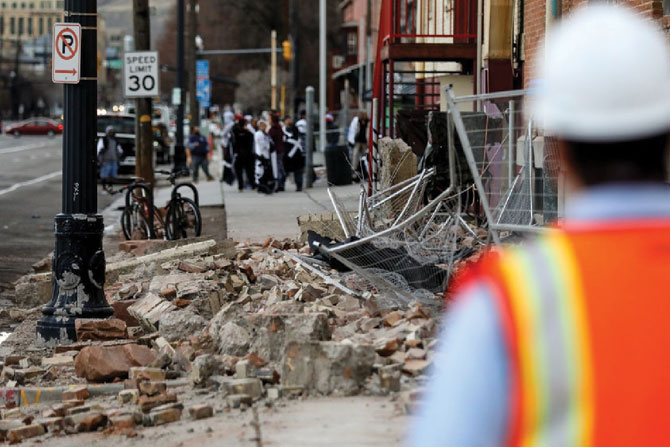
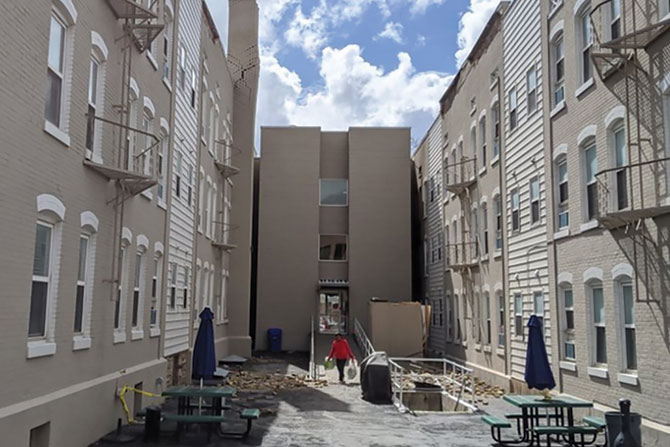
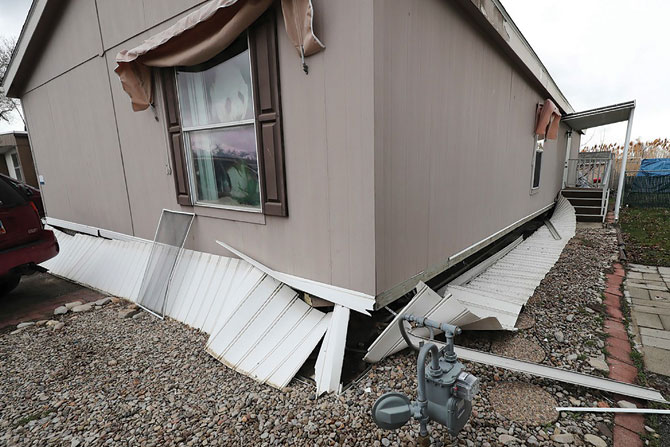
The nonstructural damage was extensive in buildings of all types in the areas where the shaking intensity was highest. Many buildings had damage to cladding systems. Separations at window frames, broken glass, and fallen unreinforced masonry were common at Main Street businesses in Magna (Photograph 6). Interior glass partitions shattered in some Salt Lake City businesses, and ceilings and lights swung from compromised supports (Photograph 7). Water leaks rained down from ceilings in building systems that have not been detailed for building movement. One such water leak shut down the Salt Lake International Airport (Photograph 8). Entire sections of mechanical ducts or diffusers fell in some buildings. New buildings experienced extensive partition wall damage, even if other systems were uncompromised. Damage to building contents included collapsed storage shelves, toppled monitors, and fallen wall clocks.
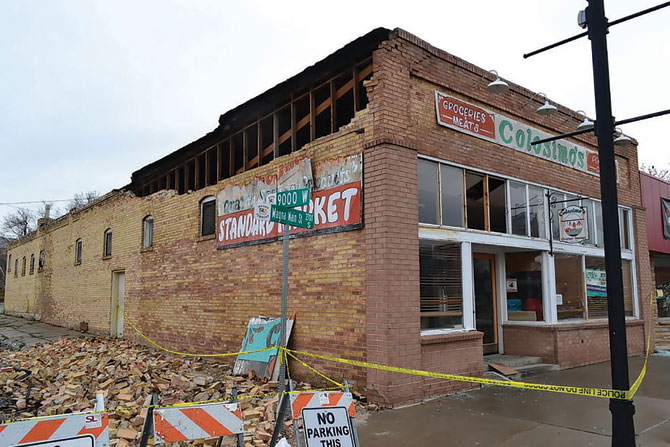
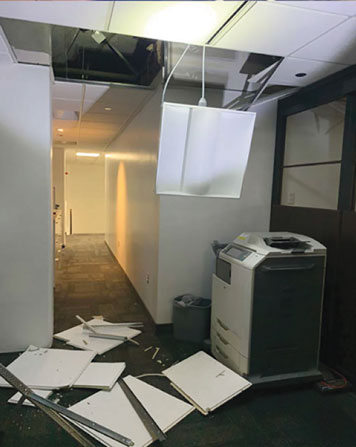
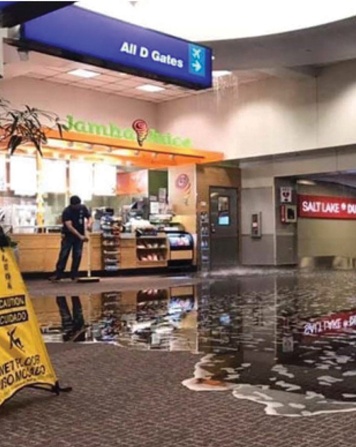
As of March 26, 2020, the Utah State Historic Preservation Office (SHPO) had identified 145 damaged historic buildings with a preliminary windshield survey. While three were determined to be unsafe to occupy for observed residual instability, none required demolition.
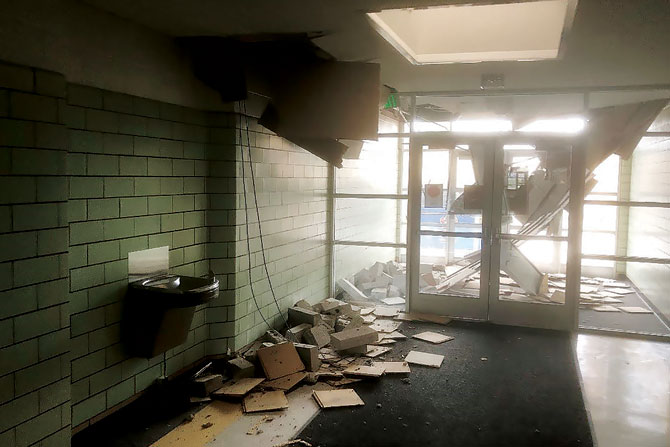
Three Salt Lake County schools had notable damage: Cyprus High in Magna, West Lake Junior High in West Valley, and Silver Crest Elementary in Herriman. The most significant damage at Cyprus High occurred near the swimming pool and the library. The school is being repaired for use until the opening of the replacement structures, estimated to be completed in 2024.14 West Lake Junior High, the hardest-hit school building, is a concrete frame building with URM interior walls. Damage at the entry corridor is shown in Photograph 8. The school district is currently determining whether to repair or replace the structure. The International Existing Building Code 2018 (IEBC 2018) includes a disproportionate earthquake damage clause that can trigger a comprehensive seismic upgrade. This provision will probably be cited often in future moderate earthquakes along the Wasatch corridor. Damage to 10-year-old Silvercrest Elementary School, a more modern school, may indicate larger community problems in new construction. Silvercrest is approximately 18 miles from the epicenter of the Magna earthquake. Shaking from the earthquake was strong enough to cause masonry veneer debris to fall from archways directly over school entrances. Due to the nature of the school building’s damage, it is reasonable to conclude that injuries would have occurred if the school had been in session that morning.
Health care facilities were largely unaffected by the earthquake, although certain older health centers were temporarily closed for building evaluations. The Utah Coronavirus hotline was shut down due to an evacuation of the call center building. The state public health office stopped processing COVID tests but resumed in less than 24 hours.15
Infrastructure impacts were largely limited to power outages from the blown transformers. By 8:08 a.m. the morning of the earthquake, Rocky Mountain Power reported 55,000 customers without power. Service was reportedly restored to all customers after midnight.
Due to the unprecedented circumstances of the ongoing pandemic, earthquake recovery is occurring largely in the background. Another disaster was declared as Salt Lake County suffered more damage in neighborhoods from downed aging trees and power lines when hurricane-force winds accompanied a storm in September.
The damage from the Magna earthquake sequence, a moderate event, was significant. Dr. Keith Koper of the University of Utah Seismograph Station noted that the largest earthquake that experts determine could be generated from the Wasatch fault system is up to an MW7.1. The energy released from an event of that size would be approximately 90 times Magna’s energy release.16 The EERI Scenario document, published in 2015, delineates the damage due to an event of that magnitude in Salt Lake.17 The HAZUS results are staggering. Updated economic losses have been revised upward to an estimated $52 billion since this document’s publication. State emergency managers will be recalibrating these models with information gathered in the Magna event.

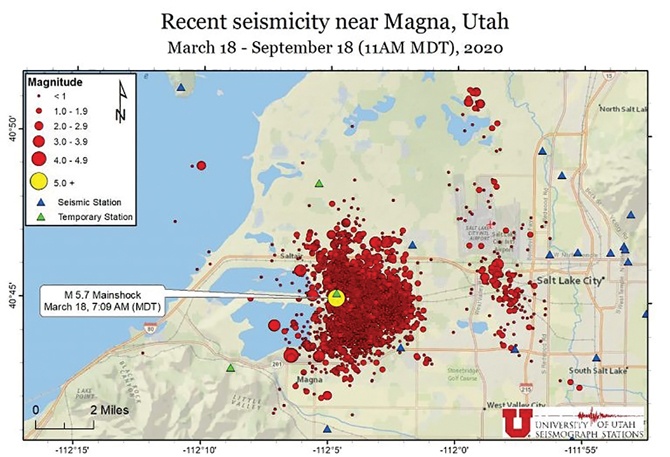
The disaster risk we face as a community has not gone unnoticed. The Utah Division of Emergency Management teamed up with FEMA Region VIII to hold a two-day summit on unreinforced masonry buildings in Utah in June 2019.18 This gathering of experts, government officials, and community organizations highlighted the needs of our community. The summit led to a large collaborative effort to generate the Wasatch Front URM Risk Reduction Strategy — a program intended to implement the federal National Mitigation Investment Strategy (NMIS), with goals to invest in ways that benefit the whole community. The final strategy document, published on the Magna quake’s anniversary, presents ideas to meet three goals: 1) show how mitigation investments reduce risks, 2) coordinate mitigation investments to reduce risks, and 3) make mitigation investment standard practice.
FEMA Region VII has identified the Wasatch Fault as “one of the most probable catastrophic natural threat scenarios in the U.S.,” noting that experts project that a major earthquake on the Wasatch Fault would be among the deadliest disasters in U.S. history. A national-scale FEMA earthquake exercise is planned for 2021: The Great Salt Shake. This event will highlight the impact of a Utah disaster on the region and country and bring attention to what can be done to make our community more resilient.
The USSC is working on funding, updating, and completing the survey of Utah K-12 schools that a lack of funding has dogged. USSC is collaborating with FEMA Region VIII and the Applied Technology Council (ATC) to fund and execute the work without funding from the state.
Envision Utah has convened a disaster resilience project with the following stated goals: 1) reduce the number of people who would be killed, injured, or displaced in a disaster; 2) reduce the disruption and damage a disaster would cause and the time needed to recover (such as restoring utilities, rebuilding structures, and reopening businesses); and 3) reduce the number of people who must leave Utah (e.g., lost job, no shelter, no water/sewer, etc.) after a major earthquake.19
In the 2021 Utah legislative session, Rep. Andrew Stoddard (HB0214) and Rep. Clare Collard (HB0366) sponsored two seismic safety bills. The first called for disclosure of unreinforced masonry at a real estate transaction, similar to lead paint, radon gas, or floodplain disclosures. At the end of February, the House Business and Labor Committee elected to hold the bill after the real estate lobby expressed opposition. Rep. Stoddard intends to continue to work on the issue. The second would have provided funds to the USSC for more public education and homeowner resources about URM. The bill made it out of committee but was voted down on the floor of the house.
Ultimately, it is up to our professional communities to engage with our policymakers at the state and local level to ensure that investment in our seismic resilience is a priority. There is a great deal of work to do, but as every disaster researcher will tell you, hazards are natural, and disasters are made. Together, we can work toward a community and a state that will see less destruction and disruption in a major earthquake and one that is ready to recover quickly.
References
- EERI 2016, https://www.eeri.org/advocacy-and-public-policy/schools-shall-be-urm-free-by-2033/
- Turner, Frank, SEAOC News January 28,2020. “Revisiting Earthquake Lessons – Unreinforced Masonry Buildings” https://www.seaoc.org/news/486967/Revisiting-Earthquake-Lessons—-Unreinforced-Masonry-Buildings.htm
- University of Utah Seismograph Stations https://quake.utah.edu/category/isbhep
- https://www.deseret.com/1999/9/1/19463577/is-utah-ready-for-a-serious-earthquake
- Prudon, Theodore H. M. (1987) The Seismic Retrofit of the City and County Building in Salt Lake City: A Case Study of the Application of Base Isolation to a Historic Building http://international.icomos.org/publications/wash62.pdf
- https://www.deseret.com/1999/9/1/19463577/is-utah-ready-for-a-serious-earthquake
- FEMA P-774 / October 2009 Unreinforced Masonry Buildings and Earthquakes, Developing Successful Risk Reduction Programs https://store.atcouncil.org/index.php?dispatch=attachments.getfileandattachment_id=138.
- Siegel, Lee J. (2011) Utah Students at Risk: The Earthquake Hazards of School Buildings. Utah Seismic Safety Commission UGS-HB5742 https://ussc.utah.gov/pages/view.php?ref=147.
- DuRoss, C.B., 2016, Earthquake forecast for the Wasatch Front region of the Intermountain West: U.S. Geological Survey Fact Sheet 2016–3019, 2 p., http://doi.dx.org/10.3133/fs20163019.
- https://geology.utah.gov/hazards/info/workshops/working-groups/q-faults/
- Wong, Ivan, https://www.researchgate.net/profile/Ivan-Wong-9/publication/348663298_The_18_March_2020_M_57_Magna_Utah_Earthquake_Strong-Motion_Data_and_Implications_for_Seismic_Hazard_in_the_Salt_Lake_Valley/links/6009fe0d45851553a05fd95c/The-18-March-2020-M-57-Magna-Utah-Earthquake-Strong-Motion-Data-and-Implications-for-Seismic-Hazard-in-the-Salt-Lake-Valley.pdf
- Fischer, Erica; Alberto, Yolanda; Amini, Mohammad Omar; Calderon, Victor; Carey, Trevor; Chandrasekhar, Divya; Codero, Diego; Craun, Zoey; DJIMA, Wilfrid; Hakhamaneshi, Manouchehr; Hamideh, Sara; McGowan, Sean; Khalil, Zeyad; Saiyed, Zahraa; Sheibani, Reza; Stahnke, Laura; Wang, Matt; Watson, Maria; Welliver, Barry; Wibowo, Hartanto; Wu, Kai; Yoo, David (2020) “EERI VERT Magna Earthquake Phase 1 Report.” DesignSafe-CI. https://doi.org/10.17603/ds2-rp5w-hj05.
- Maison, Bruce and Vance Strunk (2020) “Mobile Home Damage in 2020 Magna, Utah Earthquake”
- Cortez, Marjorie, “5.7 magnitude earthquake, aftershocks caused estimated $1 million damage to Cyprus High School.” https://www.deseret.com/utah/2020/4/6/21210076/utah-earthquake-magnitude-5-7-damage-cyprus-high-school
- Carlisle, Nate, “Utah coronavirus hits another snag: an earthquake” https://www.sltrib.com/news/2020/03/18/utah-earthquake-disrupts
- Koper, Keith, EERI Learning from Earthquakes Webinar: Magna, Utah Earthquake Reconnaissance Briefing — July 23, 2020
- EERI Utah Chapter (2015), Scenario for a Magnitude 7.0 Earthquake on the Wasatch Fault-Salt Lake City Segment
- ATC 137-2 (2020), Proceedings: FEMA-Sponsored Summit on Unreinforced Masonry Buildings in Utah
- https://envisionutah.org/disaster-resilience-project
Jessica Chappell, S.E., LEED AP
Jessica is a principal at Reaveley Engineers. She is a licensed structural engineer in Utah and Alaska and has worked in structural consulting for over 17 years. She serves as the vice-chair of the Utah Seismic Safety Commission (USSC), is a member of the Envision Utah Disaster Resilience Steering Committee, and is a certified rater with the United States Resilience Council (USRC). Jessica has participated in organizing the EERI Utah Chapter Resilience Workshops and has represented Reaveley in a partnership with the University of Utah College of Architecture and Planning for their Community Resilience programs for the last two years. Jessica is also a newly appointed member of the Cottonwood Heights Planning Commission.
In addition to resilience and community-focused endeavors, Jessica is on the NCSEA Structural Engineering, Engagement, and Equity (SE3) Committee, is a member of the SEAU Technical Committee and serves on the Education Committee for Utah Society of Healthcare Engineering. Jessica authored a paper about the Cedar City Temples spire’s rocking mechanism and presented it at the 11th U.S. National Conference on Earthquake Engineering.
Her recent notable projects include Intermountain Primary Children’s Hospital, Lehi (in design), Intermountain Alta View Hospital, and the Thanksgiving Point Butterfly Biosphere.



